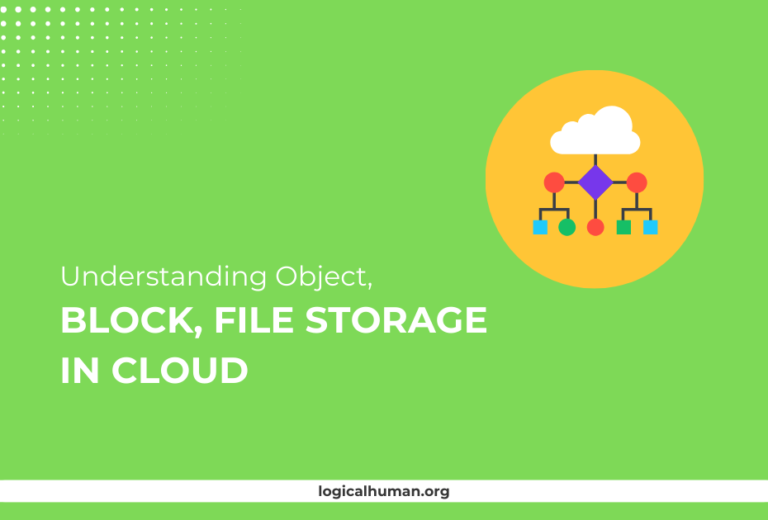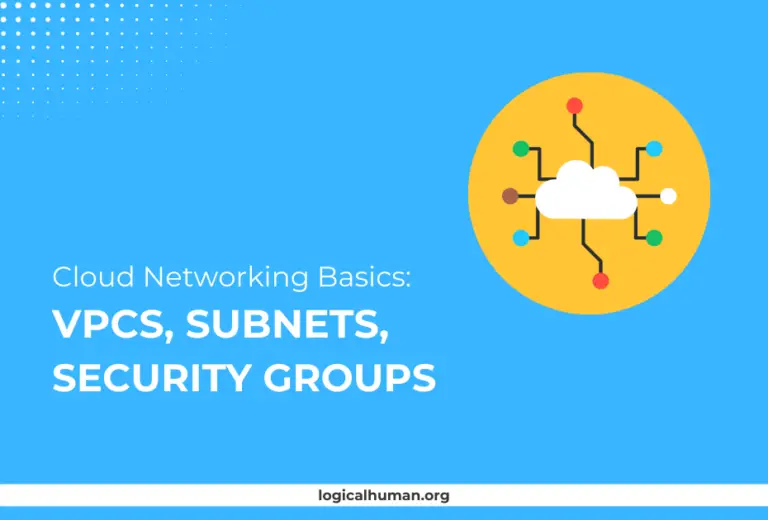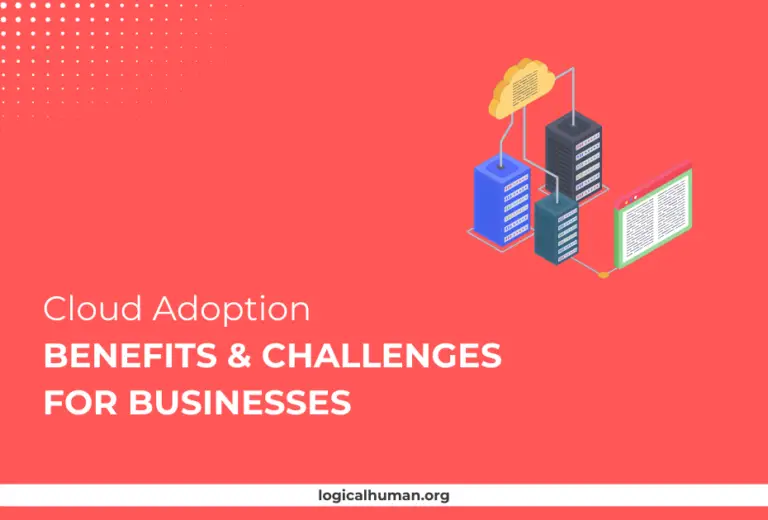In today’s fast-paced digital era, businesses are under immense pressure to innovate and stay competitive. This drive towards modernization is what we call digital transformation. But what exactly does this transformation entail? And more importantly, how does cloud computing fit into the equation? In this article, we’ll delve into how cloud computing is a game-changer for organizations embarking on digital transformation journeys.
What is Digital Transformation?
Digital transformation refers to the integration of digital technology into all areas of a business, fundamentally changing how companies operate and deliver value to their customers. It’s more than just adopting new technology; it’s about rethinking business models, processes, and customer interactions in a digital-first world.
Role of Cloud Computing in Digital Transformation
Cloud computing is the foundation upon which digital transformation is built. It provides the infrastructure, platforms, and software that enable businesses to innovate, scale, and become more agile. By moving to the cloud, companies can leverage powerful computing resources on-demand, without the need for significant upfront investments in hardware and software.
Key Benefits of Cloud Computing for Digital Transformation
Scalability and Flexibility
One of the most significant advantages of cloud computing is its scalability. Unlike traditional IT infrastructures, cloud resources can be scaled up or down based on demand. This flexibility allows businesses to handle varying workloads without investing in additional infrastructure, ensuring they are always prepared for growth or changes in demand.
Cost Efficiency and Resource Optimization
Cloud computing eliminates the need for costly hardware and reduces the burden of maintaining IT infrastructure. Businesses can pay for what they use, optimizing costs and reallocating resources to focus on core activities. This cost efficiency is particularly beneficial for startups and small businesses looking to innovate without breaking the bank.
Enhanced Collaboration and Productivity
Cloud platforms enable teams to collaborate seamlessly from anywhere in the world. Tools like Google Workspace and Microsoft 365 allow for real-time collaboration on documents, spreadsheets, and presentations, boosting productivity and reducing time-to-market for new products and services.
Data Security and Compliance
Security is often a concern when it comes to digital transformation. However, cloud providers invest heavily in security measures, offering robust solutions for data encryption, access control, and compliance. Businesses can leverage these security features to protect sensitive information and comply with industry regulations.
How Cloud Computing Supports Business Agility
Rapid Deployment and Time-to-Market
Cloud computing allows businesses to deploy new applications and services rapidly. Instead of waiting for weeks or months to set up physical servers and infrastructure, companies can launch new digital initiatives in a matter of hours or days. This speed is crucial for staying competitive in today’s dynamic business environment.
Facilitating Innovation and Experimentation
With cloud computing, businesses can experiment with new ideas without significant financial risk. Cloud services like Amazon Web Services (AWS) and Microsoft Azure offer a plethora of tools and services that enable rapid prototyping and testing of new products. This fosters a culture of innovation and encourages teams to push boundaries.
Cloud Computing and Improved Customer Experiences
Personalization and Real-Time Analytics
In the digital age, customers expect personalized experiences. Cloud computing enables businesses to harness the power of big data and analytics to understand customer behavior and preferences. This data can be used to deliver personalized marketing messages, product recommendations, and customer service, enhancing the overall customer experience.
Seamless Integration with Customer Platforms
Cloud platforms can easily integrate with various customer relationship management (CRM) systems and other customer-facing applications. This integration ensures that customer data is always up-to-date and accessible, allowing for better decision-making and more targeted marketing efforts.
Cloud as a Catalyst for Business Growth
Enabling Global Expansion
The cloud makes it easier for businesses to expand globally. With cloud-based services, companies can set up operations in new regions without the need for a physical presence. This global reach allows businesses to enter new markets quickly and efficiently.
Supporting Mergers and Acquisitions
Mergers and acquisitions often require the integration of disparate IT systems. Cloud computing simplifies this process by providing a unified platform for data and application management. This reduces the complexity and cost of integrating systems, enabling smoother transitions during mergers and acquisitions.
Overcoming Digital Transformation Challenges with Cloud Computing
Addressing Legacy System Issues
Many organizations struggle with outdated legacy systems that are difficult to modernize. Cloud computing offers solutions such as hybrid cloud and multi-cloud environments, enabling businesses to integrate legacy systems with modern cloud applications. This approach allows companies to gradually transition to the cloud without disrupting existing operations.
Mitigating Security Risks
While cloud computing offers robust security features, transitioning to the cloud can still pose risks if not managed properly. Businesses must implement best practices for cloud security, such as multi-factor authentication, regular security audits, and employee training, to protect against data breaches and cyber threats.
Cloud Services Enabling Digital Transformation
Infrastructure as a Service (IaaS)
IaaS provides virtualized computing resources over the internet, such as servers, storage, and networking. This service model allows businesses to build and manage their IT infrastructure without investing in physical hardware, offering flexibility and scalability for digital initiatives.
Platform as a Service (PaaS)
PaaS offers a platform for developing, testing, and deploying applications. It provides businesses with the necessary tools and frameworks to build custom applications, making it ideal for companies looking to innovate and develop unique digital solutions.
Software as a Service (SaaS)
SaaS delivers software applications over the internet on a subscription basis. It eliminates the need for businesses to install and maintain software, enabling them to access applications from any device with an internet connection. Popular SaaS solutions include Salesforce, Slack, and Zoom.
| Cloud Service Model | Description | Key Benefits for Digital Transformation | Use Cases |
|---|---|---|---|
| Infrastructure as a Service (IaaS) | Provides virtualized computing resources over the internet. | Scalable infrastructure without physical hardware costs. Flexibility to build custom solutions. On-demand resources. | Disaster recovery solutions. Development and testing environments. Data storage and management. |
| Platform as a Service (PaaS) | Offers a platform for developing, testing, and deploying applications. | Simplifies application development. Reduces time-to-market. Supports collaboration among development teams. | Building web and mobile apps. Streamlined DevOps processes. Integrating AI and machine learning models. |
| Software as a Service (SaaS) | Delivers software applications over the internet on a subscription basis. | Eliminates the need for software installation and maintenance. Provides access from any device. Facilitates seamless updates and scalability. | Customer relationship management (CRM). Project management tools. Communication and collaboration platforms. |
Real-World Examples of Cloud-Driven Digital Transformation
Case Study 1: Amazon Web Services and Netflix
Netflix leveraged AWS to transform its streaming platform, enabling it to handle massive amounts of data and provide seamless viewing experiences for millions of users worldwide. This cloud-based approach allowed Netflix to scale rapidly and innovate with new features like personalized recommendations.
Case Study 2: Microsoft Azure and GE Aviation
GE Aviation uses Microsoft Azure to analyze data from thousands of aircraft engines. This cloud-based solution allows GE to monitor engine performance in real-time, predict maintenance needs, and reduce operational costs. The result is a more efficient and reliable aviation industry.
Best Practices for Leveraging Cloud for Digital Transformation
Defining a Clear Strategy and Roadmap
Before embarking on a cloud transformation journey, businesses must define a clear strategy and roadmap. This involves setting objectives, identifying key stakeholders, and outlining the steps required to achieve digital transformation goals.
Choosing the Right Cloud Provider
Not all cloud providers are created equal. Businesses should evaluate providers based on their specific needs, such as security features, scalability options, and pricing models. Popular cloud providers include AWS, Microsoft Azure, and Google Cloud Platform.
Ensuring Stakeholder Buy-In
Successful digital transformation requires the support of all stakeholders, from employees to executives. Companies should communicate the benefits of cloud computing and provide training to ensure everyone is on board with the transformation journey.
Future Trends in Cloud Computing and Digital Transformation
AI and Machine Learning in the Cloud
AI and machine learning are transforming the way businesses operate. Cloud providers offer AI and machine learning tools that enable companies to automate processes, gain insights from data, and enhance customer experiences.
Edge Computing and IoT Integration
Edge computing and IoT are emerging trends that complement cloud computing. By processing data closer to the source, edge computing reduces latency and improves the performance of IoT devices, making it a crucial component of digital transformation.
Cloud-Native Development
Cloud-native development involves building applications that are designed to run in cloud environments. This approach leverages microservices, containers, and serverless computing to create scalable and resilient applications, enabling faster development and deployment cycles.
Conclusion
Cloud computing is a powerful enabler of digital transformation, providing the infrastructure, tools, and services needed to innovate and grow in today’s digital world. By leveraging the cloud, businesses can improve agility, reduce costs, and deliver exceptional customer experiences. As technology continues to evolve, the role of cloud computing in digital transformation will only become more significant.
FAQs
What is the role of cloud computing in digital transformation?
Cloud computing provides the infrastructure, platforms, and software needed to support digital initiatives, enabling businesses to innovate, scale, and respond quickly to changing market conditions.
How does cloud computing improve business agility?
Cloud computing allows businesses to deploy new applications and services quickly, experiment with new ideas, and scale resources on-demand, making it easier to respond to changes and seize new opportunities.
What are the challenges of using cloud computing for digital transformation?
Challenges include integrating legacy systems, managing security risks, and ensuring compliance with regulations. However, these can be mitigated with proper planning and best practices.
How do companies choose the right cloud service for digital transformation?
Companies should assess their specific needs, such as scalability, security, and cost, and choose a provider that aligns with their digital transformation goals. Popular providers include AWS, Microsoft Azure, and Google Cloud.
What are the future trends in cloud computing?
Future trends include the integration of AI and machine learning, the rise of edge computing and IoT, and the adoption of cloud-native development practices. These trends will continue to drive innovation and digital transformation in various industries.



